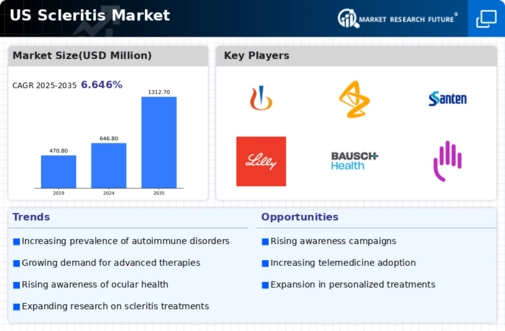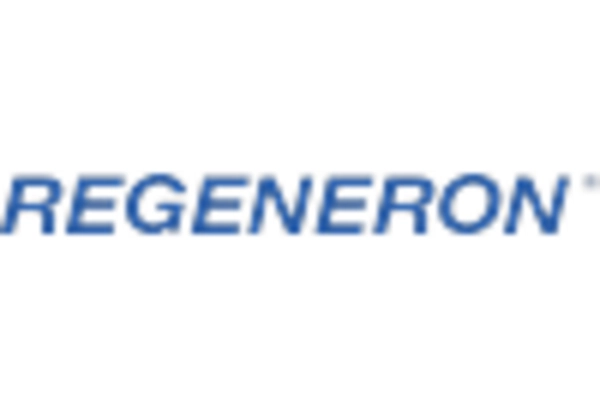Growing Geriatric Population
The increasing geriatric population in the US is another critical driver for the scleritis market. As individuals age, they become more susceptible to various ocular conditions, including scleritis. The US Census Bureau projects that by 2030, approximately 20% of the population will be aged 65 and older. This demographic shift suggests a potential rise in the incidence of scleritis among older adults, who may also have comorbidities that exacerbate the condition. Consequently, the healthcare system may need to allocate more resources towards managing scleritis in this age group, thereby stimulating growth in the scleritis market.
Rising Healthcare Expenditure
The rising healthcare expenditure in the US is a significant factor influencing the scleritis market. As healthcare costs continue to increase, patients are more likely to seek treatment for conditions like scleritis, which can lead to serious complications if left untreated. According to the Centers for Medicare & Medicaid Services, national health spending is projected to grow at an average rate of 5.4% annually. This increase in spending may facilitate greater access to healthcare services, including specialized treatments for scleritis. Consequently, as more patients seek care, the demand for effective therapies in the scleritis market is expected to rise.
Advancements in Diagnostic Techniques
Recent advancements in diagnostic techniques are likely to enhance the identification and management of scleritis, thereby impacting the scleritis market positively. Innovations such as optical coherence tomography (OCT) and enhanced imaging modalities allow for more accurate diagnosis of scleritis and its underlying causes. This improved diagnostic capability may lead to earlier intervention and treatment, which is crucial for preventing complications associated with the condition. As healthcare providers adopt these advanced diagnostic tools, the market could see an increase in the number of diagnosed cases, subsequently driving demand for effective treatment options within the scleritis market.
Increasing Incidence of Autoimmune Disorders
The rising prevalence of autoimmune disorders in the US appears to be a significant driver for the scleritis market. Conditions such as rheumatoid arthritis and lupus, which are known to be associated with scleritis, have been on the rise. According to recent data, approximately 1.5 million Americans are diagnosed with rheumatoid arthritis, a condition that can lead to scleritis. This increasing incidence suggests a growing patient population that may require specialized treatment options, thereby expanding the market. Furthermore, as awareness of these conditions increases, more patients are likely to seek medical attention for symptoms related to scleritis, further propelling the demand for therapeutic interventions in the scleritis market.
Increased Research and Development Investments
There appears to be a notable increase in research and development investments focused on ocular diseases, including scleritis. Pharmaceutical companies and research institutions are dedicating more resources to develop novel therapies and treatment protocols. This trend is likely to result in the introduction of new medications and treatment options that could improve patient outcomes. As these innovations enter the market, they may attract attention from healthcare providers and patients alike, thereby driving growth in the scleritis market. Furthermore, government grants and funding for research in this area may further bolster these efforts, enhancing the overall market landscape.

















Leave a Comment